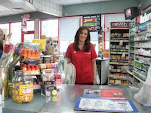
Friday, October 17, 2008 - Sales rocket for Novi maker of 5-Hour Energy - Jaclyn Trop / The Detroit News
NOVI - There are two rules for employees at Living Essentials in Novi: You can't be tired and you definitely cannot be hung over.
President Scott Henderson learned the rules the hard way when he yawned at a meeting shortly after joining the company two years ago. A berry-flavored 5-Hour Energy "shot," the size of a 2-ounce whiteout bottle, was thrown at his head.
Living Essentials, which debuted in 2004 with its Chaser-Plus Freedom from Hangovers tablets, has found a sweet spot in its 5-Hour Energy drink, a mix of caffeine and B-vitamins. The shots come in three flavors -- berry, orange, and lemon-lime -- as well as in "extra-strength" and decaffeinated.
The dominant player in the energy shot market by far, 5-Hour Energy is expected to sell $200 million this year, according to Henderson. Of the 28 energy shot brands tracked by Nielsen, 5-Hour Energy took a 76 percent market share with sales three times larger than the other brands combined, according to A.C. Nielsen Monitor Plus.
The energy drink market, which includes two-ounce shots, as well as 8- and 16-ounce beverages, has averaged 53.1 percent growth over the past five years, according to the Beverage Marketing Corp.
"The way we got to be number one in the category was by creating the category," said creative director Carl Sperber.
The company's original half-dozen employees (now numbered at two dozen) sipped their first energy drink at a trade show in 2004 and quickly decided to improve upon the standard-sized beverages by making them smaller and more effective.
"The idea was, I wasn't thirsty, I just wanted energy," Sperber said.
Six months later, they had perfected a formula, designed packaging, and began selling it for $2.99 at GNC counters.
"They loved it. It was a high-profit item that sold itself and didn't take up a lot of space."
Success at the checkout
Soon other convenience, drug and specialty stores such as Office Max and Circuit City began stocking 5-Hour Energy. A national deal with Walgreens "basically put the product on the map for us," Sperber said.
A radio campaign generated strong buzz, but due to the weaknesses of the medium, "no one knew what to look for," Sperber said. Calls and e-mails began pouring in from people who could not find the product buried on natural health shelves between Power Bars and diet pills.
Persuading retailers to display the drink at checkout "flipped the switch for us," Sperber said.
Meanwhile, the company began developing a memorable television commercial, spending $10 million in its first year on a spot featuring executives "crashing" at their desks mid-afternoon, according to Nielsen data.
"They just seem to be a juggernaut," said Gerry Khermouch, editor of Beverage Business Insights magazine. "They have a great brand name. 5-Hour Energy says it all. There's nothing difficult for the consumer to comprehend."
After resisting convenience store giant 7-11's demands that the shots be displayed on peg hooks and reduced to 99 cents, sales skyrocketed.
"They thought we were crazy," Sperber said. "But the price gave the consumer the perception of being a premium product. At 99 cents, they wouldn't try it and would just group it with the other junk."
Living Essentials knows its target demographic: 25- to 45-year-old men. Women comprise about 30 percent of consumers.
"We were not going after 14-year-old boys," Sperber said. "We're trying to reach people who work hard, work long hours, get sleepy at 2 p.m. and don't want to crash."
Copycats showing up
5-Hour Energy's success has given rise to a spate of copycats, including several expected to release within the next couple of months, Khermouch said. "There are literally dozens of other shots entering the market, from no-names to brands like (energy drink best-sellers) Monster, Rockstar, and NOS."
But, Sperber said, "These are small companies riding our coattails."
Competitors are "quick buck artists" lacking in name recognition, Henderson agreed. "You say '5-Hour Energy,' and people know what you're talking about."
Coca-Cola has its own "stable of energy drinks," including NOS, Rockstar, and a new distribution deal with Monster, but Living Essentials does not view the manufacturer as a major competitor.
"The only thing they have is a daunting distribution network," Henderson said. "Otherwise they're reaching people who wouldn't drink an energy drink anyway."
Room for new players
Analysts say there is plenty of room in the liquid energy category for new players. "We continue to find that retailers and distributors remain enthusiastic about the energy drink category," wrote Stifel Nicolaus analyst Mark Astrachan in a recent note to investors. Meanwhile, the energy shot market is "approximately $300 million at retail and growing significantly faster than the energy drink market."
But the category is not invincible, Khermouch said. "A lot of people in business are holding their breath to see if there's a backlash like there was with bottled water. I think there's a feeling of tempting fate."
Living Essentials has seen a 2,400 percent increase in 5-Hour Energy revenue since pulling in $8 million in 2005, its first year of sales. Meanwhile, the company's hangover antidote continues to languish at $4 million or $5 million annually. But it will not pull resources from the energy shot to bolster sales of the Chaser-Plus Freedom from Hangovers line, Sperber said.
"It would be taking our eye off the home run ball for the bunt single."




No comments:
Post a Comment